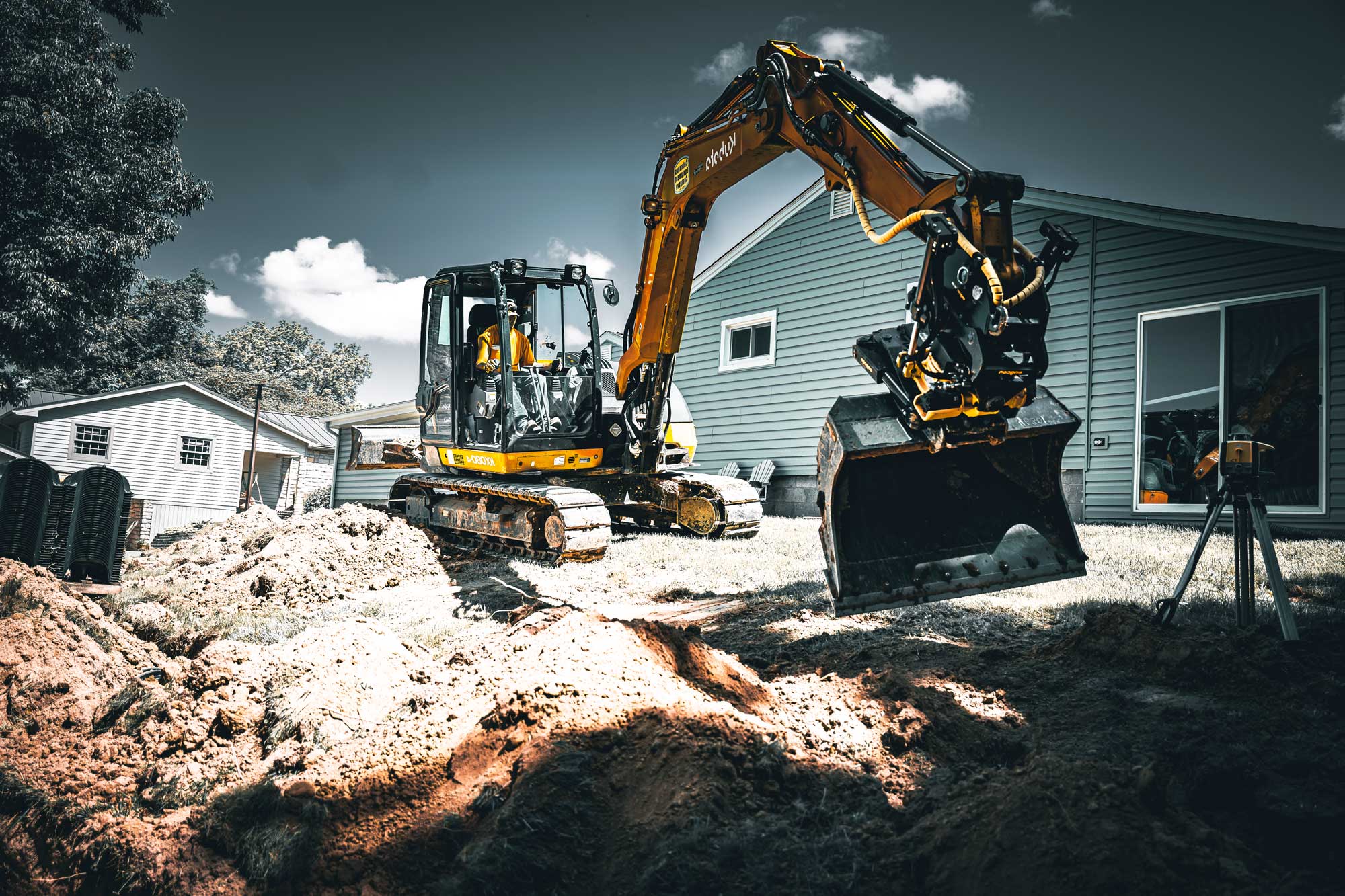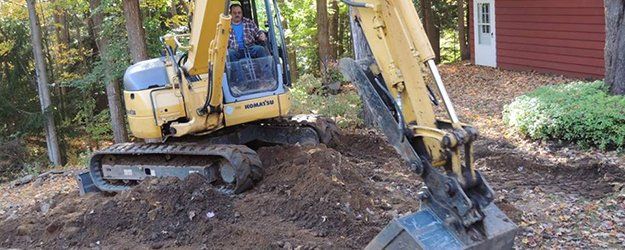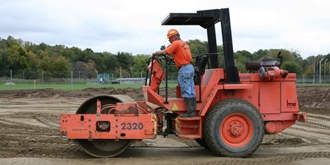Excavating Ohio - Top Excavation Professionals for Ohio Projects
Excavating Ohio - Top Excavation Professionals for Ohio Projects
Blog Article
In-Depth Exploration: The Science Behind Superior Excavation Practices
The realm of excavation practices is a domain where scientific research intertwines with craftsmanship to uncover the mysteries hidden beneath the earth's surface. From old hand devices to modern-day hydraulic excavators, the evolution of excavation strategies has actually been a testimony to human ingenuity and technological developments. What really establishes premium excavation methods apart is a deep understanding of geological principles, paired with the utilization of sophisticated tools and approaches. By exploring the scientific research behind these techniques, we can discover the secrets that lie below our feet and appreciate the precision and expertise that go right into every dig.
Evolution of Excavation Methods
Throughout history, the evolution of excavation strategies has actually played a vital function in advancing building and construction techniques and archaeological explorations. From the simple devices utilized by our ancestors to the advanced machinery used in modern-day times, the progression of excavation methods has actually dramatically transformed how we approach different tasks.
In old times, hands-on labor with basic tools such as shovels, pickaxes, and wheelbarrows was the primary approach of excavation. This labor-intensive process limited the deepness and range of excavations, frequently resulting in sluggish progression and limited access to certain sites. Nevertheless, as civilizations progressed, so did the devices and techniques utilized for excavation.
The Industrial Transformation noted a transforming factor in excavation exercise with the intro of steam-powered machinery. This technology changed the area, enabling faster and extra comprehensive excavations. In contemporary times, modern technology plays a pivotal duty in excavation, with improvements like GPS systems, drones, and 3D scanning improving accuracy and efficiency in the area. The evolution of excavation methods remains to form the means we build, explore, and comprehend the world around us.
Function of Innovation in Excavation

The integration of advanced modern technology has essentially transformed the area of excavation, enhancing precision and efficiency to extraordinary levels. One of the key technological developments that has significantly affected excavation methods is the usage of general practitioner systems. These systems permit accurate mapping of excavation sites, enabling operators to accurately situate below ground energies and structures. In addition, the use of telematics in excavation tools has actually made it possible for real-time surveillance of maker efficiency, leading to aggressive upkeep and boosted functional performance.
In addition, the advent of 3D modeling and simulation software application has structured the planning process for excavation tasks. Designers and operators can currently visualize the whole excavation procedure before breaking ground, determining potential difficulties and maximizing process. Together with this, the application of drones in excavation activities has actually promoted airborne studies, volumetric measurements, and website assessments with unequaled rate and precision.
Geological Principles in Excavation
An understanding of geological principles is vital for making sure the architectural integrity and stability of excavation websites. Geological elements play a crucial function in figuring out the feasibility and security of excavation tasks (lancaster trenching). One essential geological principle to take into consideration is the type of soil or rock present at the site. Various soil types, such as sand, crushed rock, or clay, have varying levels of security and require various excavation techniques. For example, natural dirts like clay might require extra support to avoid collapses, while sandy dirts might be prone to disintegration throughout excavation.
By carrying out thorough geological surveys and evaluation, excavators and engineers can develop methods to reduce threats and guarantee the effective completion of excavation tasks. Eventually, other including geological principles into excavation methods is essential for accomplishing secure, effective, and sustainable results.

Newest Tools for Excavation
In the world of excavation techniques, contemporary developments in tools have actually transformed the effectiveness and accuracy of excavation processes. Among the current tools making waves in the market is the use of drones outfitted with sophisticated imaging modern technology. These drones can supply detailed aerial surveys of excavation websites, offering real-time information on topography and potential risks. This information help in far better preparation and decision-making during the excavation procedure.
One more cutting-edge tool obtaining popularity is the implementation of 3D printing innovation for producing custom excavation tools. This enables the manufacturing of specialized devices that are customized to the details requirements of a job, enhancing performance and lowering downtime.
Moreover, advancements in materials science have brought about the development of more powerful and a lot more long lasting excavation tools. lancaster trenching. Tungsten carbide-tipped excavator add-ons, for instance, deal exceptional performance in tough ground conditions, boosting performance on-site
Scientific research's Influence on Excavation Practices

Additionally, developments in materials scientific research have actually brought about the creation of more powerful, much more sturdy excavation tools and tools. For circumstances, the use of composite materials in shovels and diggers has actually improved their efficiency and longevity, eventually visit this site right here increasing productivity on excavation websites. In addition, scientific research study on dirt technicians and geotechnical engineering has actually offered valuable understandings right into soil habits, permitting excavation specialists to make enlightened choices regarding excavation methods and soil stablizing methods. On the whole, scientific research remains to drive advancement and renovation in excavation techniques, making excavation tasks much more reliable, affordable, and lasting.

Final Thought
In conclusion, the evolution of excavation strategies has actually been considerably influenced by advancements in technology and a much deeper understanding of geological concepts. The current tools and tools made use of in excavation have click resources boosted efficiency and precision in the field. The application of clinical understanding has actually significantly boosted excavation methods, causing a lot more reliable and sustainable methods for digging deep into various kinds of products.
In the realm of excavation practices, contemporary advancements in tools have changed the efficiency and accuracy of excavation processes. By leveraging scientific concepts, the excavation sector has been able to considerably enhance performance, accuracy, and security in excavation procedures. GPR permits excavation groups to non-invasively check and map subsurface frameworks, energies, and prospective hazards, enabling them to plan excavation jobs with better precision and minimized danger of mishaps.
Furthermore, clinical study on soil technicians and geotechnical engineering has given valuable insights into dirt actions, enabling excavation professionals to make informed decisions concerning excavation approaches and dirt stabilization techniques. In general, science proceeds to drive advancement and renovation in excavation techniques, making excavation projects much more efficient, cost-efficient, and lasting.
Report this page